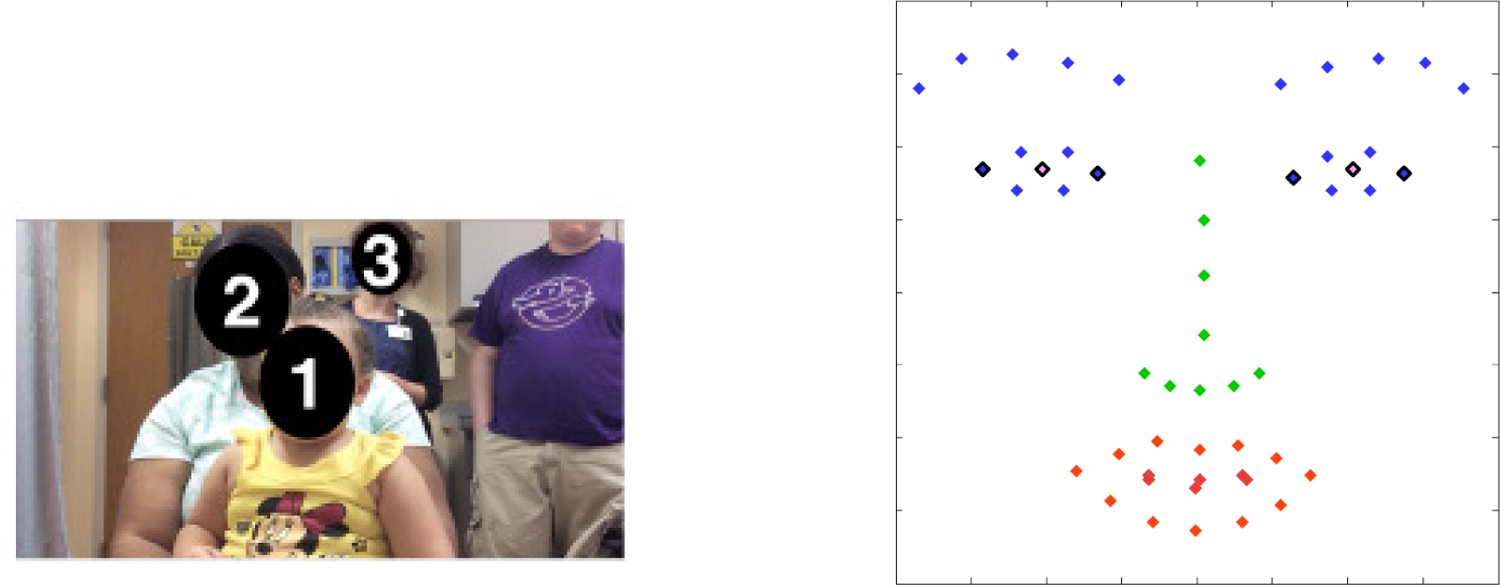Fig. 1.

Screenshot of the recorded video from the front facing tablet’s camera (left), and example of automatic facial landmarks used for attention detection (right). The child (1) is sitting on the caregiver’s (2) lap, while the practitioner (3) is standing behind in this example. The six outlined automatically detected landmarks (in black) are the ones used for measuring the direction of the attention.
